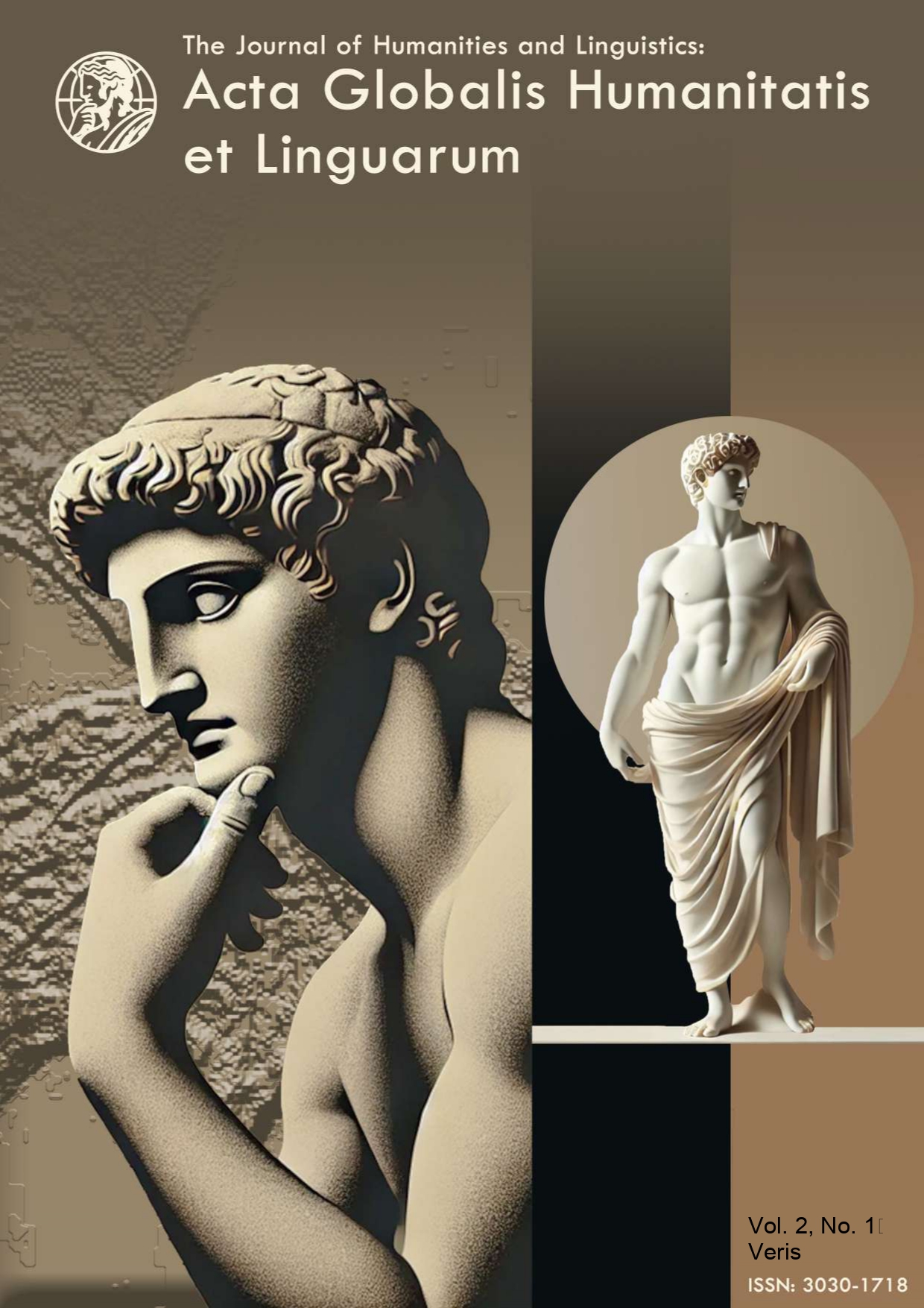Explaining the Digital Health Marketing Model in Gaining Health Welfare Support from Nonprofits
DOI:
https://doi.org/10.69760/aghel.02500201Keywords:
Digital Health Marketing, Charity Advocacy, Nonprofit OrganizationsAbstract
Background and Objective: By using digital health marketing as a means of connecting donors and beneficiaries, non-profit organizations can drive their marketing activities to reach more donors and donors and fulfill the benevolent intentions of donors to help people in need. Therefore, the main objective of this study is to present a digital health marketing model for obtaining donor support from non-profit organizations.
Method: This study was conducted using a qualitative grounded theory method. For this purpose, experts related to health marketing, including [1]marketing ethics teachers, experts, benefactors, and public participation from a non-profit organization, were used, and the sampling method was purposive, snowball, and purposive until saturation. Data analysis was performed using the Strauss & Corbin (1998) method.
The validity of the research findings was assessed using the four criteria of Lincoln & Guba (1985). It was stated that it was measured and confirmed through acceptable tests, transferability, reliability, and confirmability.
Ethical considerations: The participants in this study were informed about the topic and method of conducting the research, and their participation was informed, free, and voluntary.
Findings: By conducting Interviews with 67 experts, the concept of directly or indirectly related to digital health marketing in gaining good support, has been identified in 18 main categories, based on the data-driven paradigm model, in the form of six dimensions of digital technology development (compatibility, ease of use, usefulness), focal phenomenon or support (informational support, emotional support, social support), strategies or trust-building (trust in institutions, trust in digital technologies, Trust leads to donation), contextual factors (knowledge, resources, training), intervening or demographic characteristics (age, gender, education) and consequences or trust-building (opportunism, willingness, performance) were constructed.
Conclusion: With the expansion of technology, digital health marketing is the missing link in attracting good support. The set of advantages of digital technologies and the existence of areas for their expansion have led to a tendency to use digital health marketing tools and tactics to gain the support of the public through digital health marketing.
References
Aghababa S.(2018) Analysis of attracting the participation of donors in the field of health. Tehran: The Second National Conference on Lasting Good (Study and Evaluation of Good Affairs in Iran with a Focus on the Challenges of Charity in Iran Today); 2018 .
Almeida F, Cunha A.(2018) Digital Donation Platform for Nonprofit and Charity Organizations. International Journal of Information Communication Technologies and Human Development (IJICTHD). 2018; 10(3): 14- 27.
Aminpour F.(2008) Medical ethics challenges in the information societies. Iranian Journal of Medical Ethics and History of Medicine. 2008; 1(1): 53-60. [Persian]
Coates Nee R.(2014) Social responsibility theory and the digital nonprofits: Should the government aid online news startups? Journalism. 2014; 15(3): 326-343 .
Collier CA, Johnson N.(2021) Nudging Charity: How Digital Nudges Influence Online Prosocial Behaviors. AMCIS 2021 Proceedings . 2021; 21(11): 21-25 .
Corbin J, Strauss A.(2014) Basics of qualitative research: Techniques and procedures for developing grounded theory. Los Angeles: Sage Publications; 2014 .
Dashti M, Sanayei A.(2018) Effective Factors on Social Shopping Intention in SocialnCommerce. Journal of Business Management. 2018; 10(1): 97-120 .
Del Baldo M.(2019) Acting as a benefit corporation and a B Corp to responsibly pursue private and public benefits. The case of Paradisi Srl (Italy). International Journal of Corporate Social Responsibility. 2019; 4(1): 1-18.
Du L, Li X, Chen F, Feng Y.(2020) Evaluating participants' customer citizenship behaviors using an Internet charity platform. Social Behavior and Personality: An International Journal. 2020; 48(6): 1- 15.
Ezzati Arasteh Pour F, Aliahmadi Jeshfaghani H.(2018) A Review of the Ethical Challenges in Health Technologies (Case Study: Digital Health Technologies). Iranian Journal of Medical Ethics and History of Medicine. 2018; 11(1): 397-416. [Persian]
Farooq MS, Khan M, Abid A.(2020) A framework to make charity collection transparent and auditable using blockchain technology. Computers & Electrical Engineering. 2020; 83: 106588.
Ghorbani A, Torabi M.(2021) Conceptualization and design of organizational meteorites model: challenges and solutions. Management of Government Organizations. 2021; 9(4): 147-164 .
Gong W, Hu J.(2020) Optimization of Public Charity Information Disclosure Based on Block chain Technology and FTI Index. In The Second International Symposium on Management and Social Sciences (ISMSS 2020). Shanghai: Atlantis Press; 2020. p.445-450.
Ha QA, Pham PNN, Le LH.(2022) What facilitate people to do charity? The impact of brand anthropomorphism, brand familiarity and brand trust on charity support intention. International Review on Public and Nonprofit Marketing. 2022; 4(2): 1-25.
Hajli MN.(2014) The role of social support on relationship quality and social commerce. Technological Forecasting and Social Change. 2014; 87: 17-27 .
Hasanzadeh Sarvestani H, Tamizifar M, Simiari MR.(2018) Crowdfunding, a Model for Attracting Donor Contributions. Islamic Finance Research. 2018; 8(1): 59-90 .
Hesse-Biber SN.(2010) Mixed methods research: Merging theory with practice. New York: Guilford Press; 2010 .
Hossain TMT, Akter S, Kattiyapornpong U, Dwivedi YK.(2019) Multichannel integration quality: A systematic review and agenda for future research. Journal of Retailing and Consumer Services. 2019; 49: 154-163 .
Hosseini SH, Salimifar M, malekosadati SS.(2019) Analysis of Individual Features and Behavior Motivations in Charitable Giving; Economic Approach. Economical Modeling. 2019; 13(46): 145- 170 .
Huang Z, Ouyang J, Huang X, Yang Y, Lin L.(2021) Explaining donation behavior in medical crowdfunding in social media. SAGE Open. 2021; 11(2): 1-12 .
Izuma K.(2012) The social neuroscience of reputation. Neuroscience Research. 2012; 72(4): 283-288 .
Kang J.(2018) Effective marketing outcomes of hotel Facebook pages: The role of active participation and satisfaction. Journal of Hospitality and Tourism Insights. 2018; 1(2): 106-120.
Kim S, Park H.(2013) Effects of various characteristics of social commerce (s-commerce) on consumers’ trust and trust performance. International Journal of Information Management. 2013; 33(2): 318-332 .
Kvale S.(1994) Interviews: An introduction to qualitative research interviewing. Washington: Sage Publications, Inc; 1994 .
Locke K.(2000) Grounded theory in management research. Grounded Theory in Management Research. 2000; 9(4): 1-160 .
Mandal PC.(2019) Public policy issues in direct and digital marketing-Concerns and initiatives: Public policy in direct and digital marketing. International Journal of Public Administration in the Digital Age (IJPADA). 2019; 6(4): 54-71 .
Mansoori A, Salimian Rezie M.(2019) Examines the factors of attraction and development of donor's participation in Library building. Journal of Studies in Library and Information Science. 2019; 11(2): 19-32 .
Mohammadpour A.(2013) Qualitative research method against method 1 (logic and design in qualitative methodology). 2nd ed. Tehran: Jame'Shenasan Publications; 2013 .
Noori R, Hatami M, Ebrahimiyan F.(2018) An Investigation of the Factors Affecting the Adoption of Information Technology And Its Effect on Human Resource. Journal of Research in Human Resources Management. 2018; 9(4): 127-153 .
Omidkhah S, Rahmani L, Masoumi M.(2020) The Impact of Digital Marketing on Increasing Customer Participation and Trust (Case Study: Tehran Online Store Customers). Tehran: National Conference on Improving and Restructuring Organizations and Businesses; 2020 .
Pearson H.(2020) Philanthropic Foundations Toronto: Building a community and a voice for philanthropy. In Toronto Landscapes, Indigenous Perspectives and Pathways. Henley-on-Thames: Philab Student Award; 2020. p.33 .
Pettigrew S, Jongenelis M, Jackson B, Newton RU.(2019) "Charity begins at home": Informal caring barriers to formal volunteering among older people. Voluntas: International Journal of Voluntary and Nonprofit Organizations. 2019; 30(5): 921-931.
Rahimi M, Rahimi E.(2019) Investigating the Impact of Digital Marketing on the Performance of Chain Stores through the Mediating Role of Marketing Capabilities. Management and Accounting. 2019; 3(22): 1-17 .
Rahman M, Bose S, Babu MM, Dey BL, Roy SK, Binsardi B.(2019) Value co-creation as a dialectical process: Study in Bangladesh and Indian Province of West Bengal. Information Systems Frontiers. 2019; 21(3): 527-545 .
Rahmi N.(2021) Analysis of the Role of E-Philantrophy Through Digital Platform and Social Media During The Covid-19 Pandemic in Human Resources Development Perspective. The International Journal of Business Review (The Jobs Review). 2021; 4(2): 203- 217 .
Rostami V, Afshari F.(2018) Research on the Legal and Theology Challenges of the Islamic Azad University Waqf Property. Law Quarterly. 2018; 48(1): 39-58
Rousseau DM, Sitkin SB, Burt RS, Camerer C.(1998) Not so different after all: A cross-discipline view of trust. Academy of management review. 1998; 23(3): 393- 404 .
Sajjadi H, Roshanfekr P, Asangari B, Zeinali Maraghe M, Gharai N, Torabi F.(2011) Quality of life and satisfaction with services in caregivers of children with cancer. Iran Journal of Nursing. 2011; 24(72): 8-17 .
Sargeant A, Lee S.(2023) Donor trust and relationship commitment in the UK charity sector: The impact on behavior. Nonprofit and Voluntary Sector Quarterly. 2020; 33(2): 185-202.
Shukla PS, Nigam PV.(2018) E-shopping using mobile apps and the emerging consumer in the digital age of retail hyper personalization: An insight. Pacific Business Review International. 2018; 10(10): 131-139 .
Stephen AT, Toubia O.(2010) Deriving value from social commerce networks. Journal of Marketing Research. 2010; 47(2): 215-228 .
Tien NH, Dana LP, Jose RJS, Van Dat N, Duc PM.(2020) Analysis of McDonalds’ entry strategy into Vietnam market. International Journal of Advanced Research and Development. 2020; 5(3): 23-29
Triantoro DA, Wahyuni T, Purna FP.(2021) Digital Philanthropy: The Practice of Giving Among Middle to Upper-Class Muslim in Indonesia and Soft Capitalism. QIJIS (Qudus International Journal of Islamic Studies). 2021; 9(2): 315-350 .
Wang X, Guo R.(2019) Application and Problems of Online Third-Party Medical Charity Donation Platform. Modern Management. 2019; 9(3): 350-359.
Waytz A, Zaki J, Mitchell JP.(2012) Response of dorsomedial prefrontal cortex predicts altruistic behavior. Journal of Neuroscience. 2012; 32(22): 7646- 7650 .
Yen DA, Dey B.(2019) Acculturation in the social media: Myth or reality? Analysing Social-Media-Led Integration and Polarisation. Technological Forecasting & Social Change. 2019; 21(3): 426-427 .
Downloads
Published
Issue
Section
License
Copyright (c) 2025 Acta Globalis Humanitatis et Linguarum

This work is licensed under a Creative Commons Attribution-NonCommercial 4.0 International License.







